
PROS
- Classy design
- Swift performance
- High-quality display
- Battery life
CONS
- Size and weight
- Lack of apps
- Comfort during exercise
KEY FEATURES
- 1.3-inch 360 x 360 always-on display
- Dual-core 1GHz
- 768MB of RAM
- 4GB storage
- Bluetooth 4.2, Wi-Fi B/G/N, NFC, MST, GPS/Glonass
- Accelerometer, gyroscope, barometer, HRM, ambient light sensor
- 380mAh battery and wireless charging
- IP68 rating
- Manufacturer: Samsung
- Review Price: £349.00
WHAT IS THE SAMSUNG GEAR S3?
Samsung’s had a fair few cracks at smartwatches now, with some faring considerably better than others. The Samsung Gear S2 certainly veered the closest to “hit” rather than “miss” compared to previous efforts.
This year’s Gear S3 takes some of the familiar principles – the round display and Tizen operating system – and augments them with a raft of new sensors and a bigger, bolder design that more closely resembles a classic analogue timepiece.
The “bigger” part shouldn’t be understated, though. Due to packing in the likes of GPS, a barometer, an altimeter and a bigger battery, the Samsung Gear S3 is a seriously chunky smartwatch. It’s not going to suit every wrist.
Even with that said, it’s a seriously classy timepiece, but unfortunately still hindered by the Tizen operating system’s lack of must-have wrist-based apps.
SAMSUNG GEAR S3 – DESIGN
The Gear S3 is actually available in two models – the Gear S3 Classic and the Gear S3 Frontier – although there’s no difference in the smart functionality of the two models. I was sent the Frontier model to review.
The Frontier is targeted towards those with more active lifestyles and comes with a more weather-resistant silicone band. The Classic errs more towards classic timepiece styling, with its traditional-style crowns and leather strap.
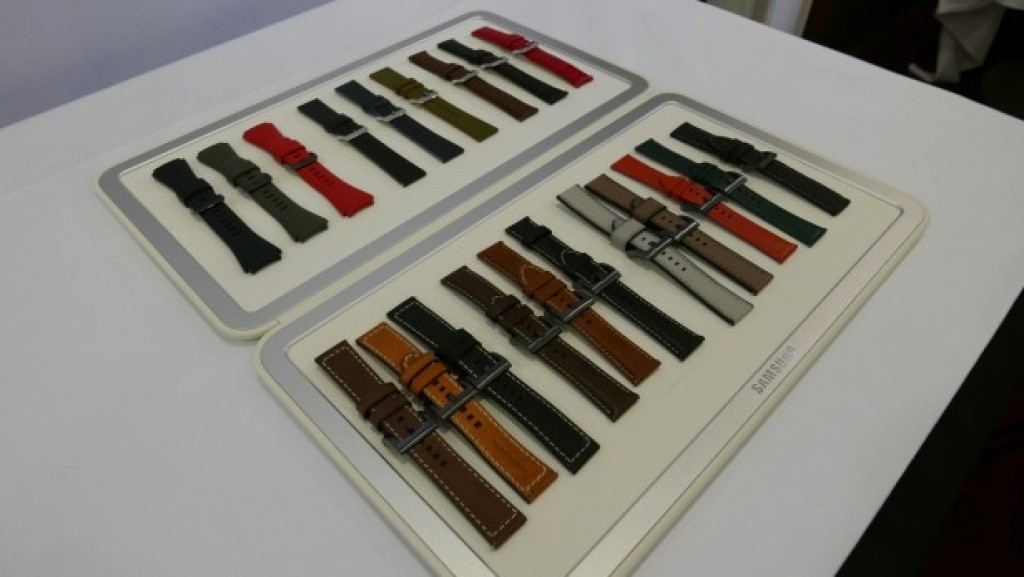
Both Gear S3 variants are compatible with standard 22mm watch bands, however, so you’re free to customise as you see fit.
What I didn’t like about the standard Gear S2’s bezel was how slippery it felt. It meant rotating could be difficult. The one on the Gear S2 Classic had distinct ridges along its edge, much like on a diver’s watch, which alleviated the issue. Fortunately, the Gear S3 improves on that further.
This bezel control was one of my favourite elements of the S2 and is by far the most natural way of interacting with a circular smartwatch. It means your fingers don’t obstruct the screen.
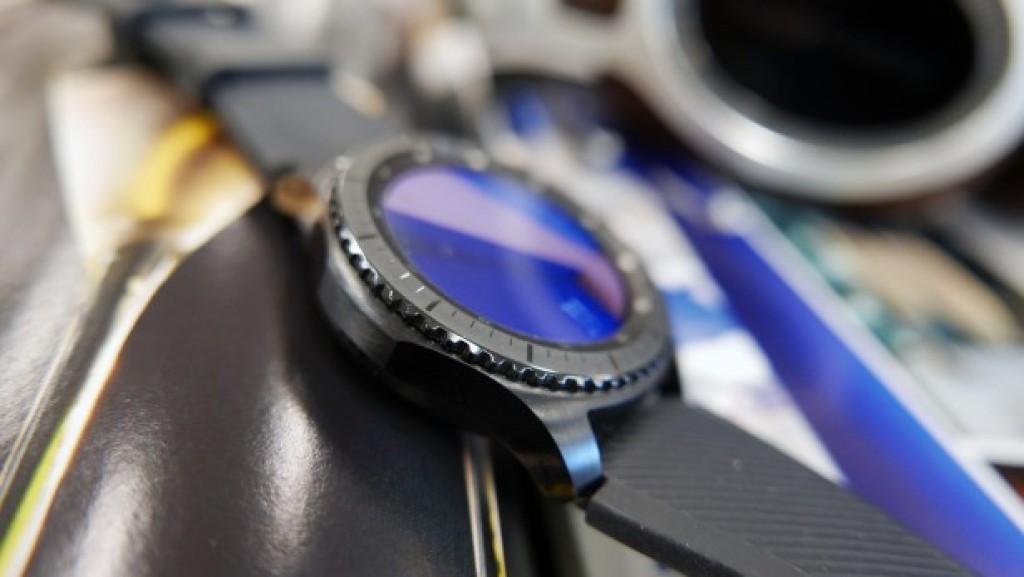
Magnets in the bezel give some tactile feedback and make jumping between screens and menu items feel really natural.
With the case measuring 46.1 x 46.1 x 12.9mm, there’s no getting away from the fact this is a chunky watch by any standards. Its thickness in particular is problematic. It means the watch gets caught on cuffs or jacket sleeves. Depending on your fashion sense, it can sometimes be difficult to actually gain access to the Gear S3 as you struggle with your sleeves.
It’s also pretty heavy at 63g for the Frontier or 59g for the Classic. That’s without the additional weight of the straps, too.
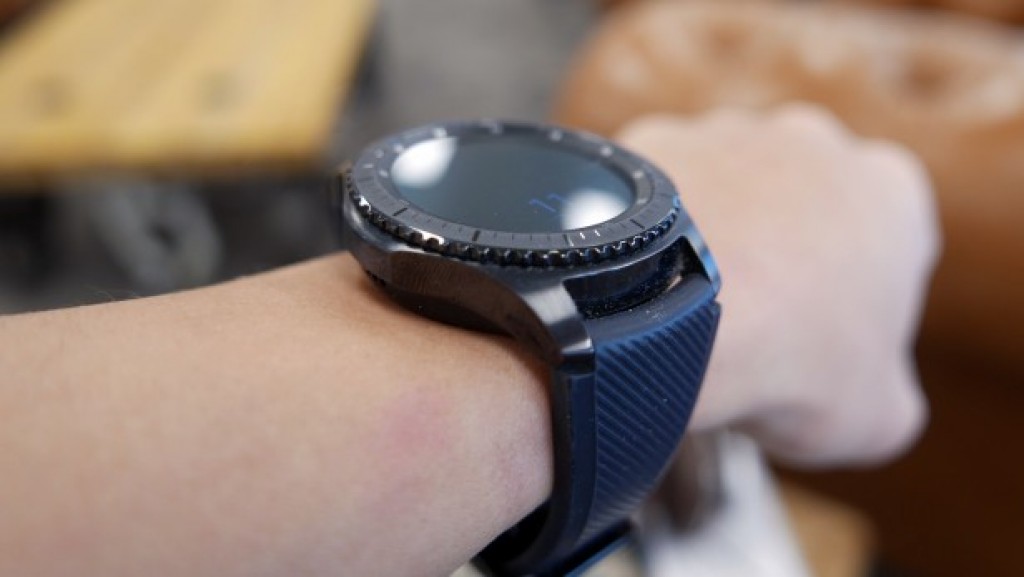
If you’re planning on wearing the Samsung Gear S3 to run, you’ll definitely notice it on your wrist. It felt as heavy as two separate trackers I wore simultaneously on my other wrist during testing.
Two buttons on the side provide a way to access the menu and go back, just like on the S2, and it’s where you’ll find the microphone. New with the Gear S3 is a built-in speaker, so you can actually use it to make and receive phone calls – although you’re going to look rather silly doing so.
You can even use it to play music, but that’s not advisable. Better to pair some headphones or a Bluetooth speaker.
The silicone strap of the Frontier model is well built, and there are two loops for taking up the excess slack. It does pick up some lint and fluff, but it’s not as bad as the Polar M600 that looked incredibly scruffy almost immediately out of the box.
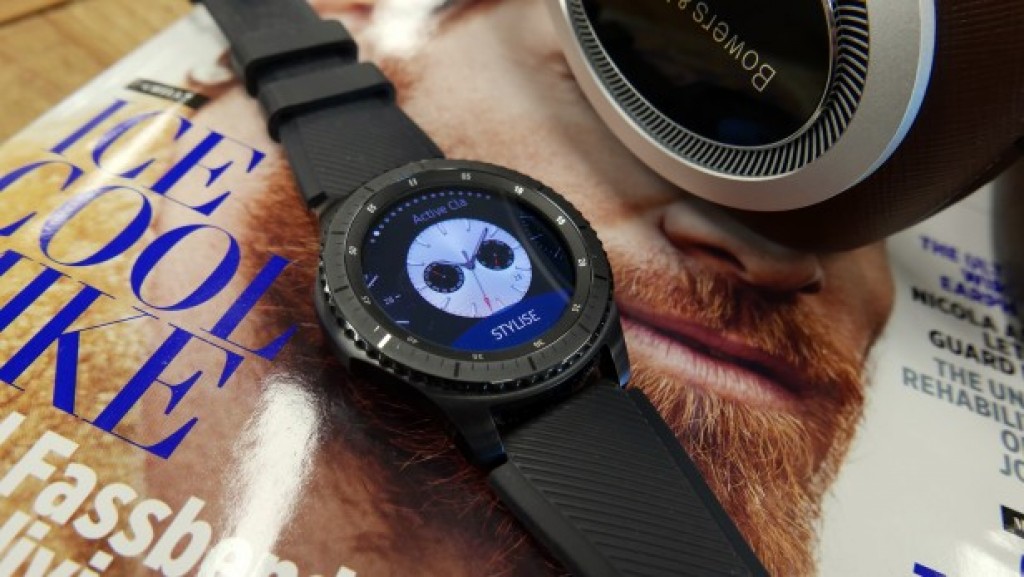
In part, the size of the Gear S3 can be excused considering it has a raft of sensors that make it more like a dedicated sports watch. Inside are an altimeter, barometer, accelerometer and GPS, then there’s an optical heart rate monitor on the back.
All of these make the Gear S3 a tantalising prospect for fans of exercise or the outdoors, but I’ll discuss this more later.
SAMSUNG GEAR S3 – DISPLAY
Beyond the more obvious analogue watch styling, the Gear S3’s larger size is dominated by a 1.3-inch display – a bump in size from the Gear S2’s 1.2-inch screen. It has the same resolution as the Gear S2, however, at 360 x 360.
While the resolution remains the same, Samsung says it has done extra work around anti-aliasing to avoid jagged edges. That seems to have paid off, as the Gear S3’s AMOLED screen is one of its best features. It’s big and bright with vibrant colours. The colour palette has been doubled to 16 million from the Gear S2 and looks all the more exciting for it.

It supports always-on display as well, which displays a lower-power version of whichever watch face you select so you’re not left with a blank screen on your watch when not in use. This does negatively impact battery life, however.
As before, if the display lights up at an inopportune time, you can cover it with your palm to turn it back off. Alternatively, you can put it in Do Not Disturb mode and it won’t turn on for incoming notifications, plus the sound is muted and vibrations are turned off.
SAMSUNG GEAR S3 – PERFORMANCE AND SOFTWARE
The Gear S3 runs on Samsung’s Tizen OS 2.3.1 and has a dual-core 1GHz processor. There’s 768MB of RAM and 4GB of internal storage. Beyond that there’s Bluetooth 4.2, 802.11b/g/n Wi-Fi and NFC built-in with support for Samsung Pay.
While the specs have received a healthy upgrade over the Gear S2, the older model never felt slow or unresponsive. So it came as no surprise that the Gear S3 felt swift too.
Jumping between menus and apps, there’s never any sign of slowdown. That’s whether you’re using the touchscreen to swipe around or the rotary bezel to navigate. It all feels really responsive and seamless.

All this said, the Tizen operating system remains the roadblock to smartwatch greatness.
There are things it does well, though. It makes great use of the rotary bezel interface, there are plenty of watch face customisations, and the widgets approach is good. You can move the widgets around so you have quicker access to your more regularly used apps and information, such as S Health.
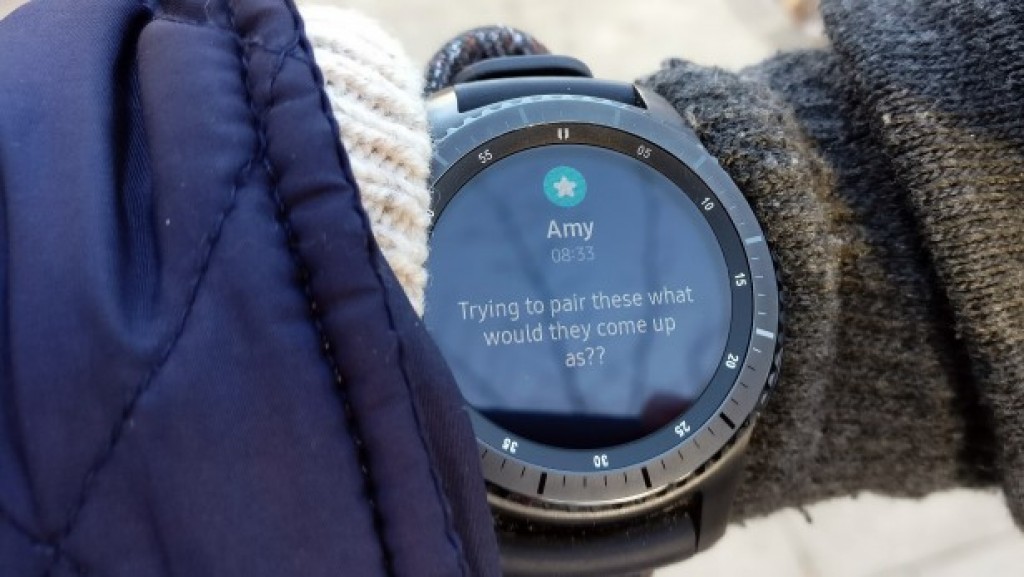
Notifications are well handled, letting you respond easily either through your voice, pre-canned replies or a slightly fiddly on-screen keyboard. They’re still a little slow to actually buzz on your wrist, though.
Clearing notifications at least feels intuitive and natural, and Tizen bundles multiple notifications together from the same app in a logical way, which isn’t always the case – as was seen with the Pebble watches.
But where Tizen shows its shortcomings is around the app catalogue, and that’s something rather important. There’s really a dearth of must-download apps. Where Android Wear and Apple’s watchOS have plenty of convenient options around smart home and navigation, there’s a distinct scarcity of all that here.
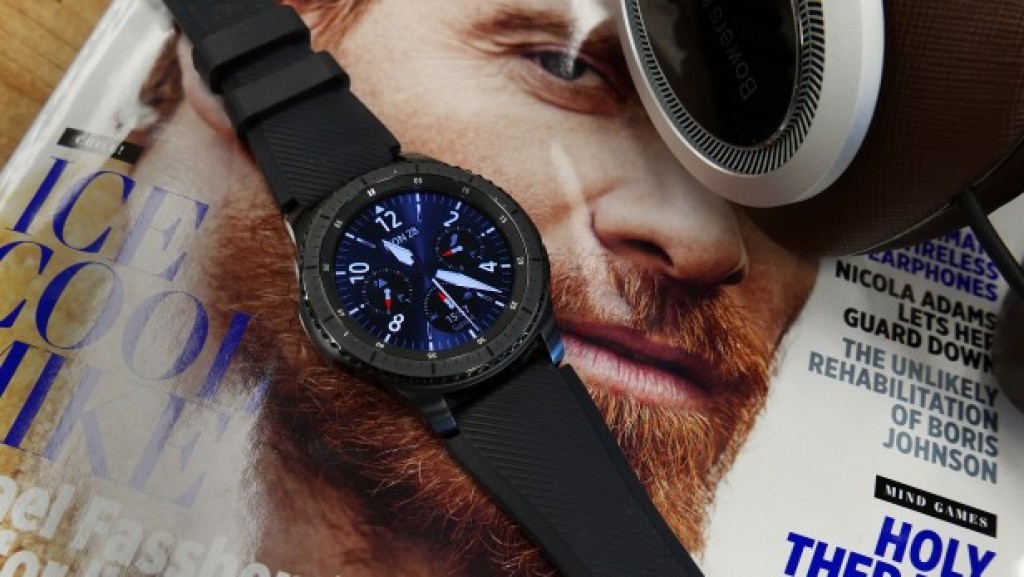
Uber has been added, but there’s no Google Maps, Citymapper or anything else that makes a lot of sense on a watch. Samsung at IFA said that a standalone Spotify app was coming, but that’s still yet to materialise. There are a few throwaway games if you need something to pass the time, but nothing that will hold your attention.
Samsung Pay is at least a useful addition that supposedly doesn’t actually require a paired Samsung phone for contactless payments. Some are reporting difficulties getting certain smartphones to work, such as the Google Pixel. A double press of the top button will bring up Samsung Pay ready to be used at a terminal. As Samsung Pay hasn’t launched in the UK, I wasn’t able to test the functionality.
SAMSUNG GEAR S3 – S HEALTH AND FITNESS TRACKING
The Gear S3 comes with the S Health app for the watch and the companion app for Android. This is responsible for keeping tabs on all of the usual activity-tracking metrics, such as steps and sleep, and all of this is done automatically.
There’s even exercise tracking on certain bodyweight movements such as squats. I found the actual rep counting a little hit-and-miss, however. You really need to exaggerate the movement to get some reps to count.
As for the step counting, this was a typical affair. You can set a target in the app and you get update prompts on your progress. You also get reminders to move if you’re sat for too long but, in a novel move, you also get prompts to stretch as well. So I could be sat there, typing away, and I’d get a buzz telling me to do a few side-to-side rotations, and the watch would count each rep on the display.
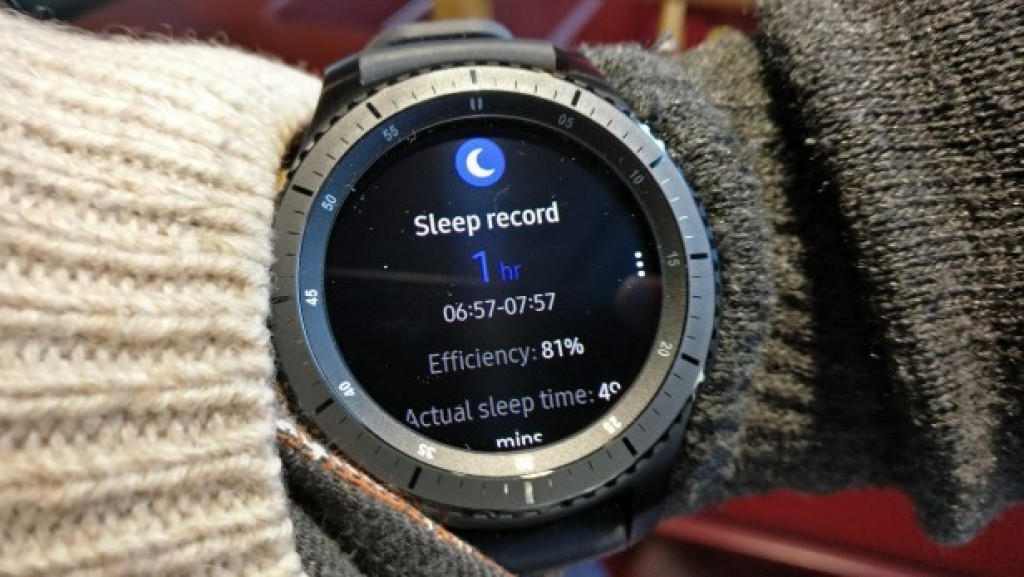
The sleep tracking was accurate on the whole, but it’s a little strange in that the notification you get on the watch when you wake up can be just one small segment of your sleep.
So say you woke up an hour or two before your alarm and went back to sleep, the notification might show your sleep time as being only an hour, rather than the total. Diving into the companion smartphone app shows the full night’s kip at least, and you get a breakdown of motionless, light and restless sleep.
Strangely, when I left the watch in my gym locker during a workout on one occasion, it decided I’d taken an early afternoon siesta and given me some additional sleep time. Fortunately this didn’t happen again, but I would’ve thought the watch could recognise being completely stationary compared with me being asleep.
The barometer and altimeter are also used to more accurately track floors climbed, so there’s a specific target for taking the stairs. Again, you get progress updates and little reward notifications to say when you beat a record or hit your goal. It’s actually all very motivating and well implemented.
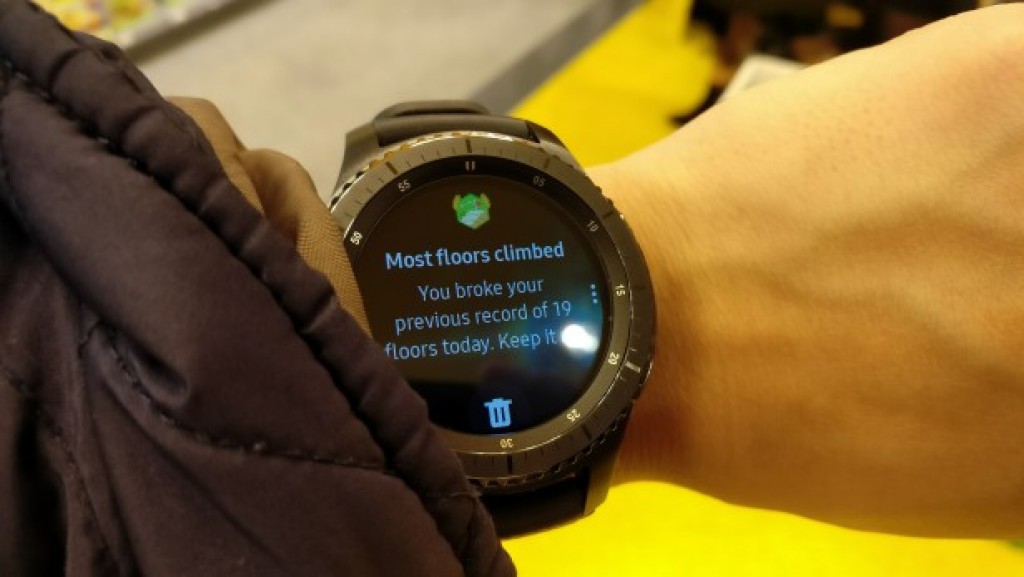
All of those sensors I mentioned earlier are what will really appeal to fitness enthusiasts, though – much like how the Apple Watch Series 2 found its footing as a fitness wearable alongside its original smartwatch smarts.
The GPS is going to be great for more accurately tracking your distance and speed during runs or bike rides, and the barometer and altimeter are going to be popular with hikers and for other outdoor exploits. This is all topped off with the returning optical HRM, as seen on the Gear S2.
Unfortunately, while the GPS was pretty much right on the button when it came to distance compared to the TomTom Spark 3, Samsung Gear Fit2 and Wahoo Fitness Tickr X I wore at the same time, the optical HRM threw up some very inaccurate readings.

Checking the watch while I ran, its bpm reading was often 20 beats higher than the TomTom Spark 3 and Wahoo Fitness Tickr X chest monitor I was wearing. It put my maximum heart rate as high as 200bpm, but generally at 180+, where both other devices were putting me in the 160-170bpm range. I’d hazard a guess that the inaccurate readings weren’t helped by how much the watch bounced around on my wrist due to its weight.
The poor HRM performance, combined with just how clunky the watch felt on my wrist, made it less than favourable for running. I have small wrists, so your experience may well be more positive, but as it stands, I’d much rather run with the Samsung Gear Fit2, which provides a very similar tracking experience, but minus the weight and I didn’t experience the anomalous heart-rate data.
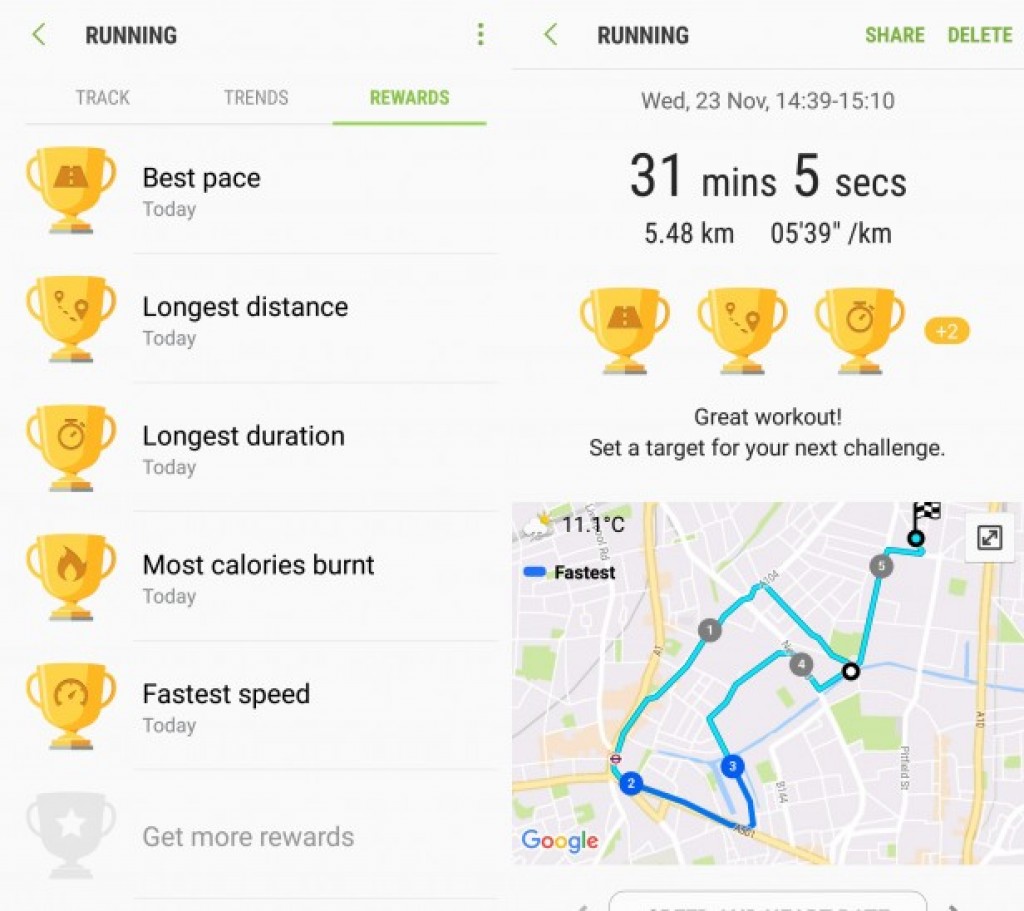
At the end of your run, the S Health app does give you a bunch of rewards to keep you motivated, in a similar method to Strava. So you’ll know if you’ve run farther or faster.
Disappointingly, while the Gear S3 is rated to IP68, Samsung says it’s not suitable for swimming or diving, which gives a distinct advantage to the Apple Watch Series 2.
SAMSUNG GEAR S3 – BATTERY LIFE AND CHARGING
Samsung has increased the battery capacity to 380mAh, up from 250mAh in the Gear S2. This meant that with the always-on display turned off, I was averaging around three and a bit days between charges. Turn on the always-on display and this dropped to just short of a full two days. That’s pretty impressive and better longevity than I saw with the Apple Watch Series 2.
A magnetic charger is included, which props the watch up so it can be used as a nightstand clock. A quick 20 minutes of charge should get you enough for 10 hours of use, so you can always top the watch up in the morning before you set off.
SHOULD I BUY THE SAMSUNG GEAR S3?
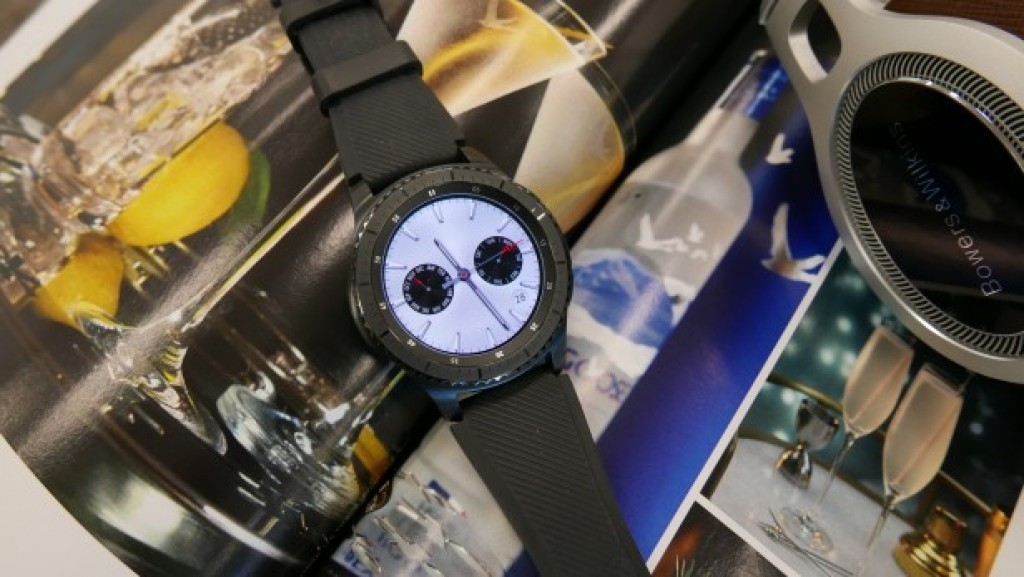
The Samsung Gear S3 is a more refined version of the S2. I’m actually really fond of its larger display and more traditional styling. I think it looks really classy. The improved rotary bezel is also really great and is my favourite piece of watch UI.
However, there’s no getting away from just how huge the watch is – especially on daintier wrists. It dwarfs all other smartwatches I’ve worn, including other large models such as the Huawei Watch.
While on paper all of its sensors should make it great for sports, its size is to its detriment and I’m pretty sure part of the reason why the heart rate monitor performed so poorly for me, especially considering I didn’t have the same inaccuracies with the Samsung Gear Fit2.
Then there’s the real issue of Tizen and its app ecosystem. There are still no great apps to be found, and I fear that’s not going to improve if it hasn’t already. After all, why develop for Tizen’s limited devices when you can reach far more with Android Wear?
Ultimately, for the high price of this smartwatch, there’s a lot of unfulfilled potential.
VERDICT
The Samsung Gear S3 flirts with greatness, but it ultimately falls short due its gargantuan size and weight, as well as its Tizen OS.

Sоurсе: trustedreviews.com





































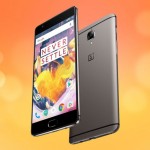




and whats with the 3 star rating when this watch last 4 days without charge! comeon it deserves at least 4 stars! apple watch 2 barely last 12 hours never mind the quoted 18hr
My Pebble Time Steel does around 8 days between charges. Doesn’t mean it should get 5 stars.
Seriously size and weight is a negative! Last time I checked all Swiss ‘000s watches were weighty and big! That is the whole essence of a watch! I hated the Gear S2 because it was small and light made my wrist feel it was naked! Now my Omega Seamaster rests on the shelf while I use my Gear S3 for every day use! Best smart watch ever! and for the Apple FANBOYS! 4 days battery life…..
I can’t understand Samsung and it’s rubbish new model release policy, again before it’s release date it is out of stock. I get regular announcements from Samsung and the opportunity to pre order and before it is released even on pre order it is out of stock.
Not for the first time have I been frustrated by Samsung. GET YOUR ACT TOGETHER SAMSUNG.
Incredible. WHY. That Gear S3 smartwatch has FOUR DAYS battery! My Gear S2 gets two, still good but FOUR. WHAT IS YOUR PROBLEM? Tizen is MUCH improved from last year. Who gives a crap about size? ALL THAT MATTERS IS IF IT CAN FIT, WHICH IT DOES. OVERRATED APPLE BIASED MORONS